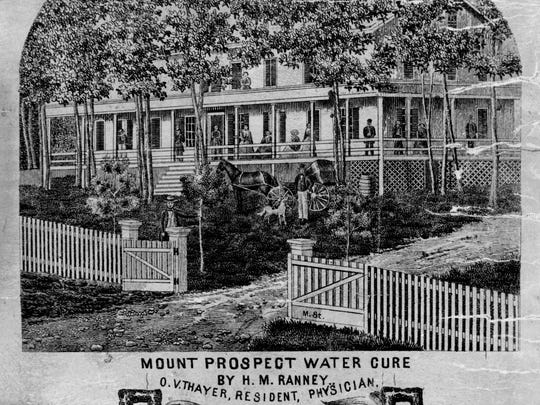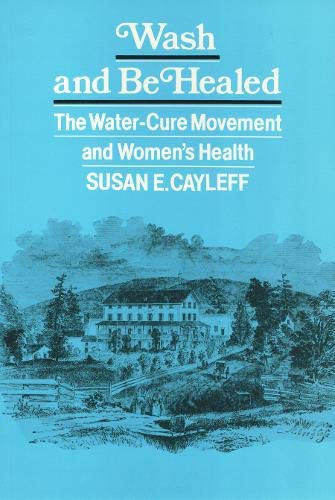Cold Water Bathing in 19th-Century American Health Care

Another! And finally we are moving into health books.
 Susan E. Cayleff. Wash and Be Healed: The Water-Cure Movement and Women’s Health. Philadelphia: Temple University Press, 1987.
Susan E. Cayleff. Wash and Be Healed: The Water-Cure Movement and Women’s Health. Philadelphia: Temple University Press, 1987.
Washed and Be Healed is a fantastic look at the history of women’s experiences of the mid-nineteenth century water cure, also called hydropathy. This cure developed in a time of widespread reform and perfectionist movements in the United States which promoted new forms of evangelicalism, vegetarianism, dress reform, and temperance. Susan Cayleff brings a feminist gaze to the nineteenth century hydropathy movement as she joins other 1980s scholars in finding value in practices previously denounced as “pseudoscience” by whiggish medical historians.
Relating accounts of women who took up long retreats in water-cure spas (an anachronism, as the word did not come into use until 1960), the water cure restored women’s health, gave them a sense of power over their health, which had been increasingly taken from them by allopathic M.D.’s, and created lasting friendships with the women with whom they convalesced. Both physical and psychological healing were obtained from the experiences in the water-cure establishments, which allowed upper- and middle-class women a respite from endless pregnancies, child rearing, and housework.

Illnesses such as arthritis, dysentery, nervous disorders, and “emotional malaise” were all treated with the water cure, which involved applying “pure” cold water to the patient internally or externally. This was added to a proper regimen of a healthy, unprocessed diet (e.g. homemade breads), fresh air and direct sunlight, exercise, and proper dress, all expounded by the Grahamite movement of the 1830s.
These treatments were often performed at water-cure centers, but the doctors taught patients how to perform the treatments at home. This gave women a sense of agency over their health, which allopathic physicians had denied, claiming them both mentally and physically inferior. While Cayleff emphasizes the communal nature of these spas for close female relationships, she notes that it also appealed to individualism and personal advancement, as the patient could slowly take charge of their own water cures, a group experience aiming toward personal improvement through self- and group-help was a model for social reform. Good health through hygiene (in the older, more capacious sense of the term) was essential to the social change reformists sought in this period, and seekers were often involved in abolition and women’s rights reforms. Indeed, the likes of Catharine and Harriet Beecher (Stowe) and Susan B. Anthony stayed in water-cure spas.
Cayleff details why the health movement faded after 1860. Movements of perfectionism of society through the self slowed during and after the horrors of the Civil War, and increased industrialization brought new trends for vacationing. The leaders, who were at the forefront of women’s medical education, were often at odds and also opposed professionalism. The major advances of allopathic medicine, as well as their attacks on “cult” health practices, signaled an end to the movement. The methods, however, continued on as hydrotherapy, well into the 20th century.
As a long-time amateur balneologist and water enthusiast, I highly recommend this book.
CATEGORIES: 19th-Century U.S. Balneology, Hydrotherapy, Water Cures, Cold-Water Bathing, Cold-Water Showers, Women’s Health, Women’s History, Women’s Movements, Antebellum U.S. History, 19th-Century Social Change.
PLACE: United States, especially Northeast
TIME PERIOD: 1840-1913 (primarily 1840-1860)
If you’d like to support the site, buy stuff that you need from the links. Some of them send us kickbacks at no cost to you, but a wee cost to the empire. Thank you! ♥